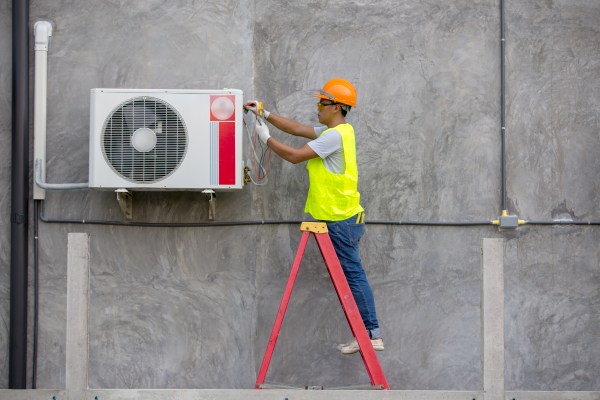With a month of hindsight, we’re getting a better picture of what the Inflation Reduction Act will mean for the American economy and the climate tech sector itself.
The new law caught many by surprise, both in the climate tech space and elsewhere. Few had thought sweeping climate legislation was possible. The final bill is not quite as comprehensive as some had hoped, but it has created a series of incentives that promise to bolster innovation and manufacturing throughout the U.S. economy.
While a lot of pixels have been lit over the extension and expansion of electric vehicle tax credits — it’s an important provision! — some of the biggest shifts will likely stem from the myriad incentives the law offers homeowners and property investors to upgrade their buildings.
In my conversations with founders over the last few weeks, nearly all of them have said the IRA, as it’s now confusingly known, has given their businesses significant tailwinds. Part of that optimism and confidence stems from the fact that the IRA approaches electrification and energy efficiency from a variety of angles, giving the market a jolt of supply- and demand-side signals that should support later-stage startups while spurring new founders to get in the game.
Established companies and later-stage startups will probably see the most immediate impact. Starting this year and next, property owners will get access to a series of tax credits that will help them electrify buildings and improve their energy efficiency. The new incentives already sending significant demand-side signals by ramping up consumer interest in systems like heat pumps and heat-pump water heaters, appliances like induction stoves, and building envelope products like windows, doors and insulation.
Companies that are adjacent to those industries stand to benefit, too. Take Flair, for example. The startup recently raised a $7.6 million Series A, though it doesn’t sell heat pumps. Its flagship product is a smart vent that helps direct heating and cooling to the rooms that need it most. But I think the company’s secret weapon is its Puck thermostat and temperature sensor. Unlike many other smart thermostats, it integrates with advanced heat pump systems. That could help Flair ride the coming waves of heat pump sales, driven by the IRA’s provisions, that promise to swamp the HVAC industry.
Those demand-side signals will spill over into sectors that aren’t traditionally thought of as part of the startup space. SMBs like HVAC installers, for example, are likely to see a significant uptick in new business. Same for electricians, who may be called on to upgrade electrical panels for the new systems (and maybe for new EV chargers, too). All those new tradespeople will need solutions for payroll, billing and CRM software, broadening the potential customer base for SaaS companies.
There’s an indirect effect, too: Rising demand for new tradespeople will also give many a new path to the middle class that has largely disappeared over the last few decades. Higher pay means more discretionary income, which means more market opportunities for startups to pursue.
The other set of incentives sends strong supply-side signals for early- and seed-stage startups. The IRA doubles the available R&D tax credits for businesses bringing in less than $5 million in gross receipts, raising it to $500,000 by allowing them to deduct up to $250,000 of their Medicare payroll tax liability.
R&D tax credits tend to be longer plays, of course. The government offers the incentive with the hopes that it’ll seed a fresh crop of startups and small businesses, some of which will go on to become major players in their field. Given the focus on early-stage companies, it’s hard to say which sectors will benefit the most. That’s the beauty of R&D tax credits — you never know what disruptive products founders will come up with! But coupled with the demand-side incentives, which provide assurances that markets for new products will exist, we can hazard a few guesses: Companies that focus on HVAC, EV chargers, batteries and building envelopes are likely candidates.
TechCrunch has covered startups in all those spaces and more — including construction materials — and while we lack comprehensive data on those markets, the opportunities are significant, often in the tens of hundreds of billions of dollars. It seems likely that we’ll see a lot more in the coming months and years.
The IRA all but ensures that climate tech for buildings is likely to emerge as one of the sectors to watch in the coming years. Certainly the EV sector will, too, but apart from batteries and chargers, the automotive sector is largely built out. Homes and offices, on the other hand, will demand a more wholesale overhaul. And given the diversity of building types and the number of existing buildings in need of retrofits, there are many more niches in which startups and investors can flourish.
